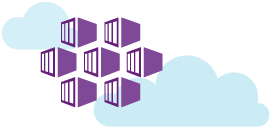
Microsoft is joining the container game with a new solution that aims to bring container apps to the cloud. The company announced the Azure Container Service is now generally available. Azure Container Service is a container scheduling and orchestration solution that is built from open-source software.
“But why a container service? Lately it seems like you can’t have a discussion about cloud computing without also talking about the benefit of container ecosystems for development agility and portability,” wrote Ross Gardler, senior program manager for Azure, in a blog post. “Organizations are already experimenting with container technology in an effort to understand what they mean for applications in the cloud and on-premises, and how to best use them for their specific development and IT operations scenarios.”
(Related: Docker for Mac and Windows enters beta)
The Azure Container Service builds on the company’s partnerships with Docker and Mesosphere, allowing users to work in the orchestration engine of their choice.
Combined with Mesosphere’s Datacenter Operating System users have access to constraints definitions, service discovery and load balancing, health checks, metrics, event subscription, application groups and dependencies, the ability to roll upgrades with zero downtime, a simple UI, and a full-featured REST API, according to Microsoft.
With Azure Container Service’s version of Docker Swarm, users have access to a full-featured CLI, third-party tools, the Docker Remote API, self-contained application definitions, the ability to operate at scale, discovery services, and constraints-based deployment, according to Microsoft.
In addition, the container service features the ability to create a hosting solution for containers, manage containers with familiar tools, work with popular open-source tools, and the portability needed to migrate to and from Azure.
“We built Azure Container Service to be the fastest way to get the benefits of running containerized applications, using your choice of open-source technology, tools and skills and with the support of a thriving community and ecosystem,” Gardler said.






